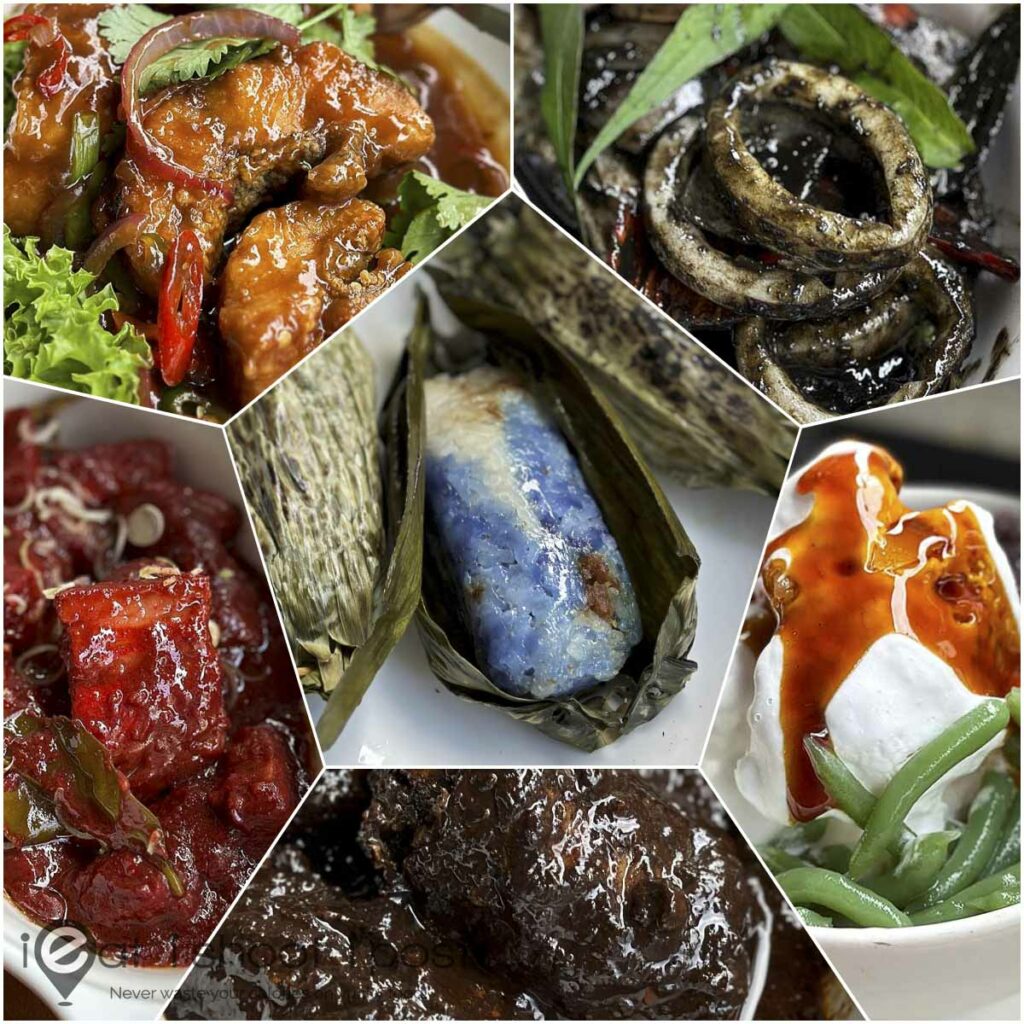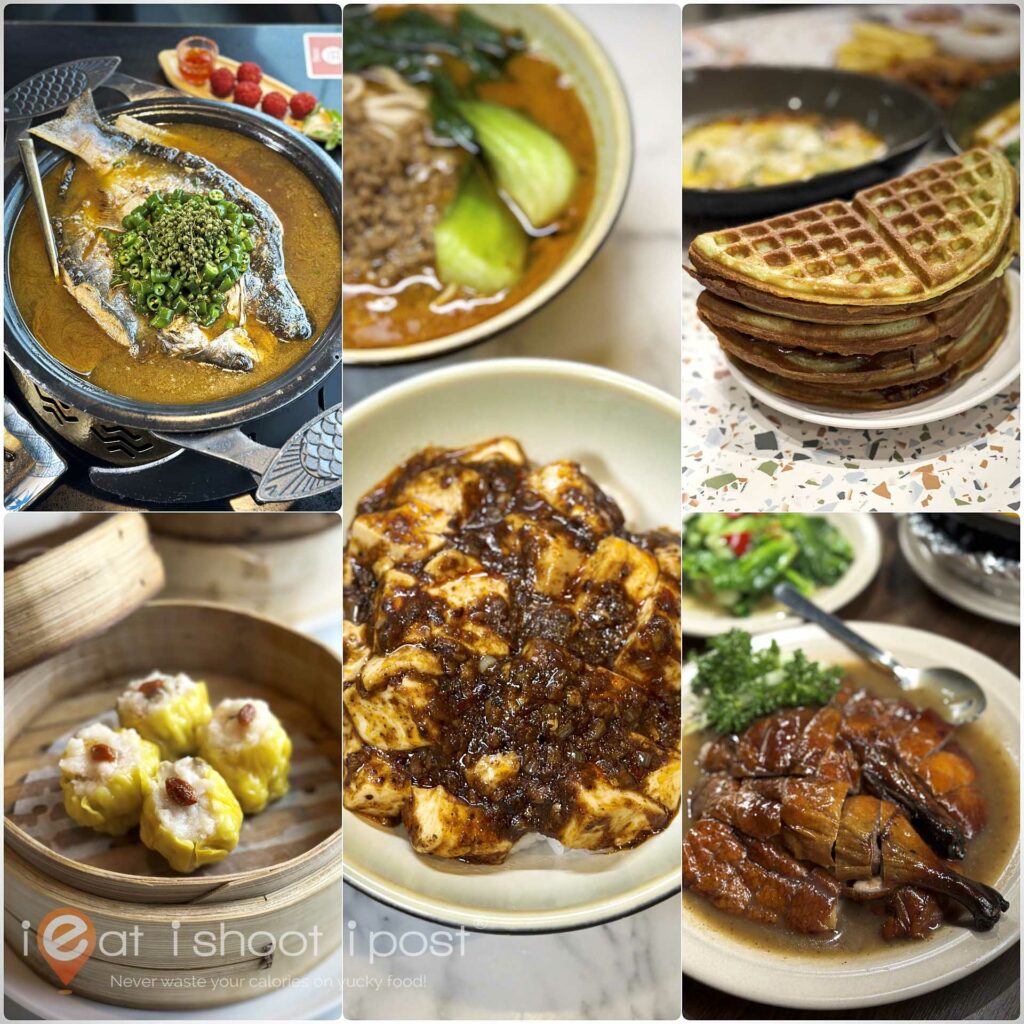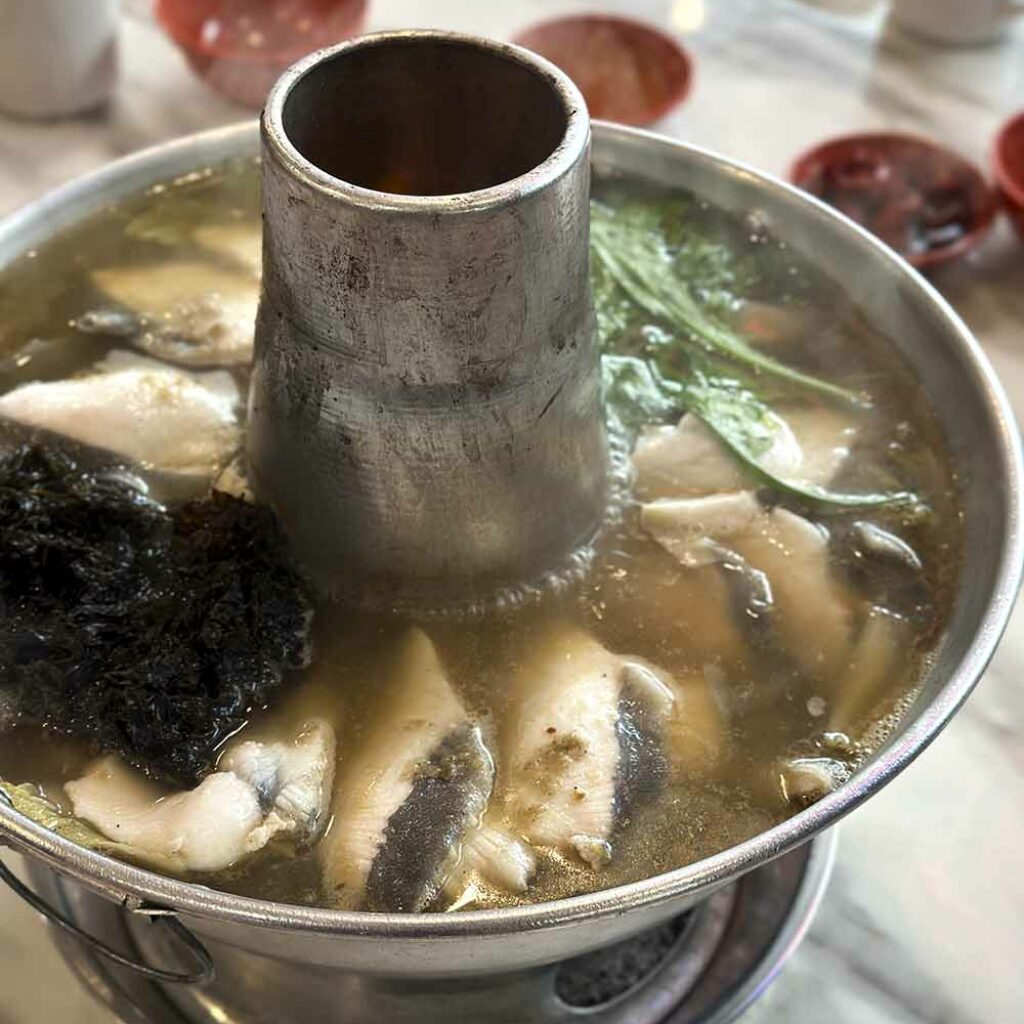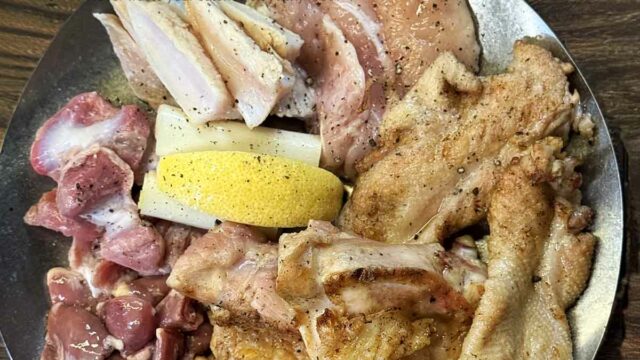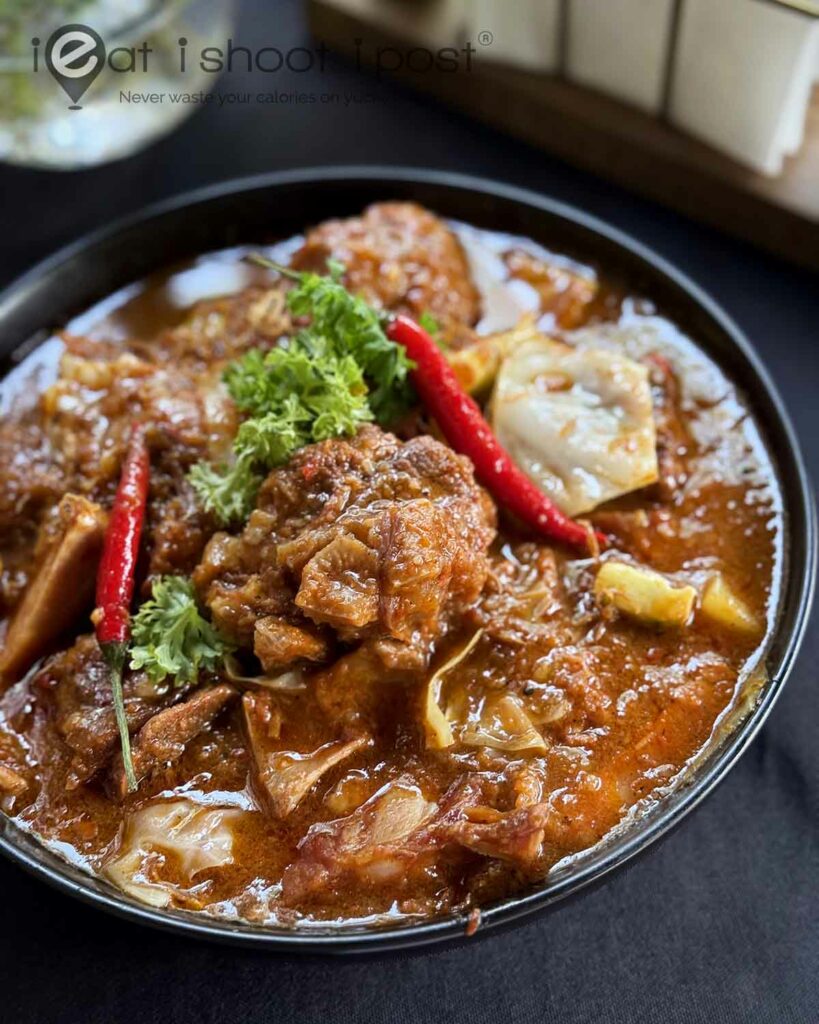
I don’t usually write about restaurants that are on the verge of closing, but I made an exception for Quentin’s. After reading a Straits Times article about its uncertain future, we quickly organized a makan session to revisit one of the last remaining Eurasian restaurants in Singapore. Given how rare Eurasian cuisine has become, I felt it was important to document some of its iconic dishes for posterity.
Tucked away along Ceylon Road, Quentin’s has long been a torchbearer for this unique Singaporean culinary heritage—and if it truly is closing by year’s end, we wanted to savour it while we still could.
I last wrote about Quentin’s way back in 2010, and since then, not much has changed when it comes to Eurasian food in Singapore. There still hasn’t been a new Eurasian restaurant opening. Meanwhile, Peranakan food continues to be trendy—especially with the current Emerald Hill TV series, which is likely to give it another boost in popularity.
Some Peranakan spots, like Damien D’Silva’s Rempapa, include a few Eurasian dishes here and there. Damien himself is proudly Eurasian, but his menu isn’t strictly so—it’s an eclectic mix of Peranakan, Indian, Malay, and Chinese influences. That’s why Quentin’s still stands out as the only restaurant in Singapore fully dedicated to Eurasian cuisine—and it feels especially fitting that it’s located at the Eurasian Association.
Which is why it’s so hard to understand: why isn’t the Association renewing their lease?

Shouldering the weight of preserving Eurasian cuisine is Quentin Pereira, the current chef owner of the restaurant. Growing up, Quentin and his five siblings always returned home for Sunday lunch and dinner to a meal lovingly prepared by their father, Robin Pereira. Robin took up cooking after the tragic loss of his father and brother in action, stepping in to care for his sister while their mother, Charlotte, worked. Charlotte and her sisters had once catered Eurasian weddings, and it was from her that Robin inherited the family’s treasured recipes. Today, Quentin honours that legacy by staying true to his father’s recipes. He still insists on grinding all the rempah in-house, staying true to tradition with every dish he prepares. That dedication shines through in his cooking, earning the near unanimous approval from our Makan Kakis.
Review of the dishes
Oxtail Curry Debal with Luncheon Meat (See photo above) $31
Curry Debal, also known as Devil’s Curry, is arguably the most iconic of all Eurasian dishes, deeply rooted in the Portuguese-Eurasian heritage. Traditionally cooked during festive seasons, especially after Christmas using leftovers. It’s known for its bold, tangy, and spicy profile, with a distinct smokiness from smoked bacon bone.
At Quentin’s, this beloved classic is given a rich and luxurious twist by using oxtail instead of the usual chicken or pork. The oxtail is slow-cooked until fall-off-the-bone tender, infusing the curry with a deep, beefy richness that elevates the dish while still staying true to its familiar, comforting flavours. Quentin’s added luncheon meat for us at the request of one of our members.
Pasteis de Bacalhau $19.30

Pasteis de Bacalhau, or Portuguese codfish cakes, are a cherished delicacy in Eurasian cuisine, made by combining flaked salted cod with mashed potatoes, eggs, and herbs, then shaping the mixture into oval patties and deep-frying them to golden perfection.
At Quentin’s, these bite-sized treats are crafted with special care—the restaurant cures its own salted cod in-house, using leftover pieces of Atlantic cod to reduce waste while staying true to the authenticity of the dish.
Seybak
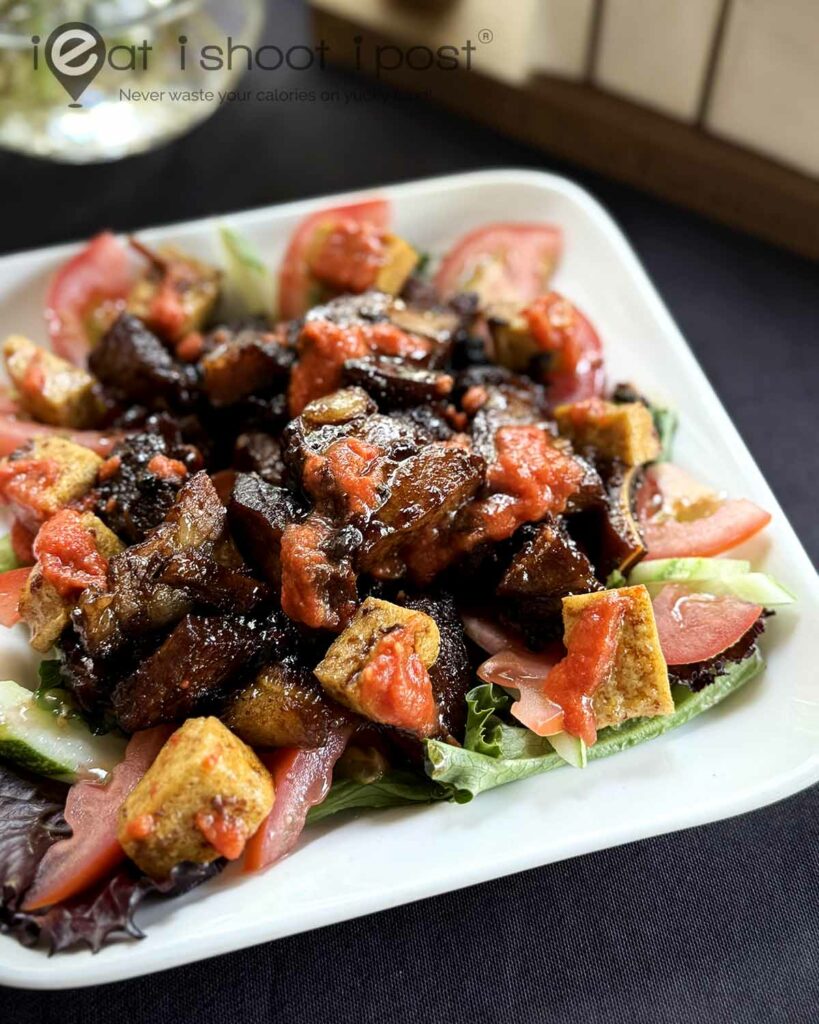
Seybak is a yet another classic Eurasian dish known for its bold, punchy flavour. Made with slices of pork belly and pig ears, it is braised slowly in a spiced soy-based sauce until the meat is dry and flavour-packed. The addition of pig ears gives the dish a delightful crunch, adding contrast to the pork belly and enhancing its overall texture. Typically served cold or at room temperature, Seybak is often enjoyed as an accompaniment to drinks, making it a popular choice at gatherings and family celebrations. It’s punchy, salty umami pairs perfectly with a cold beer or a glass of whisky.
Wagyu Brisket $36
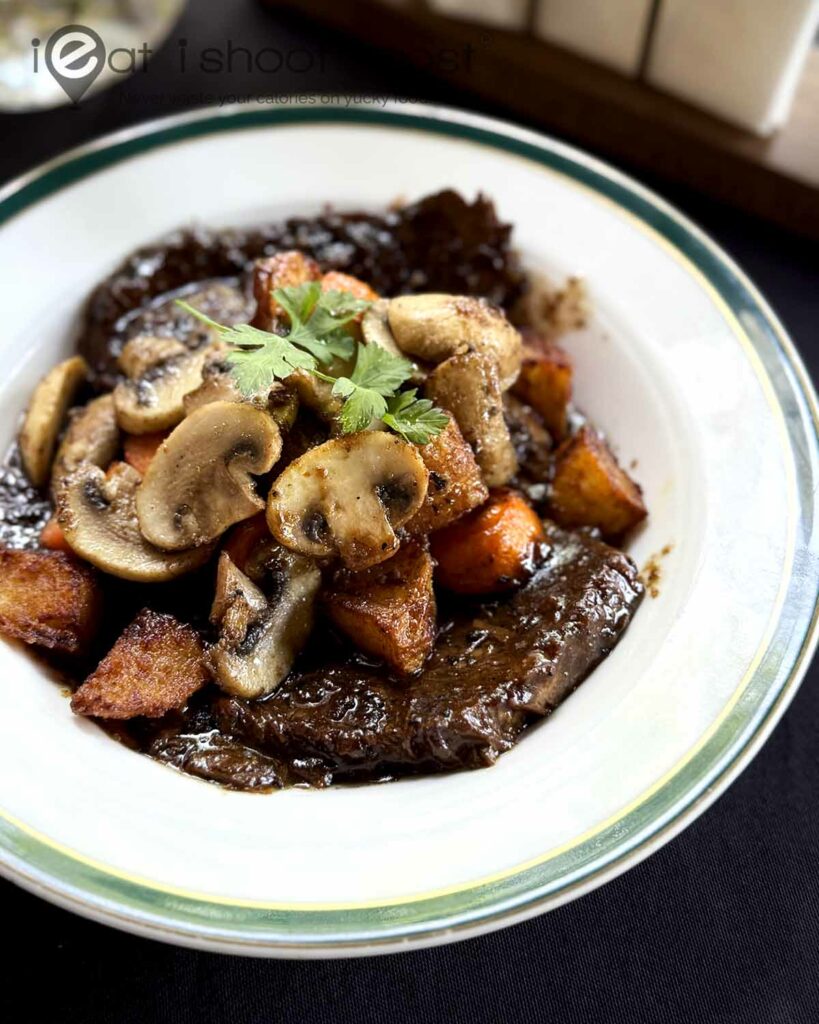
Quentin’s wagyu brisket is perhaps the least traditionally Eurasian dish on the menu. It is the kind of dish which you would expect to find in a modern Western restaurant. The wagyu brisket is braised until meltingly tender, then served with a bold black pepper sauce, accompanied by potatoes and mushrooms. It’s a deeply satisfying dish, especially for those (like myself) who enjoy the rich, hearty flavours of slow-cooked brisket.
Retu Tinta Choka (Black Ink Calamari) $26.20
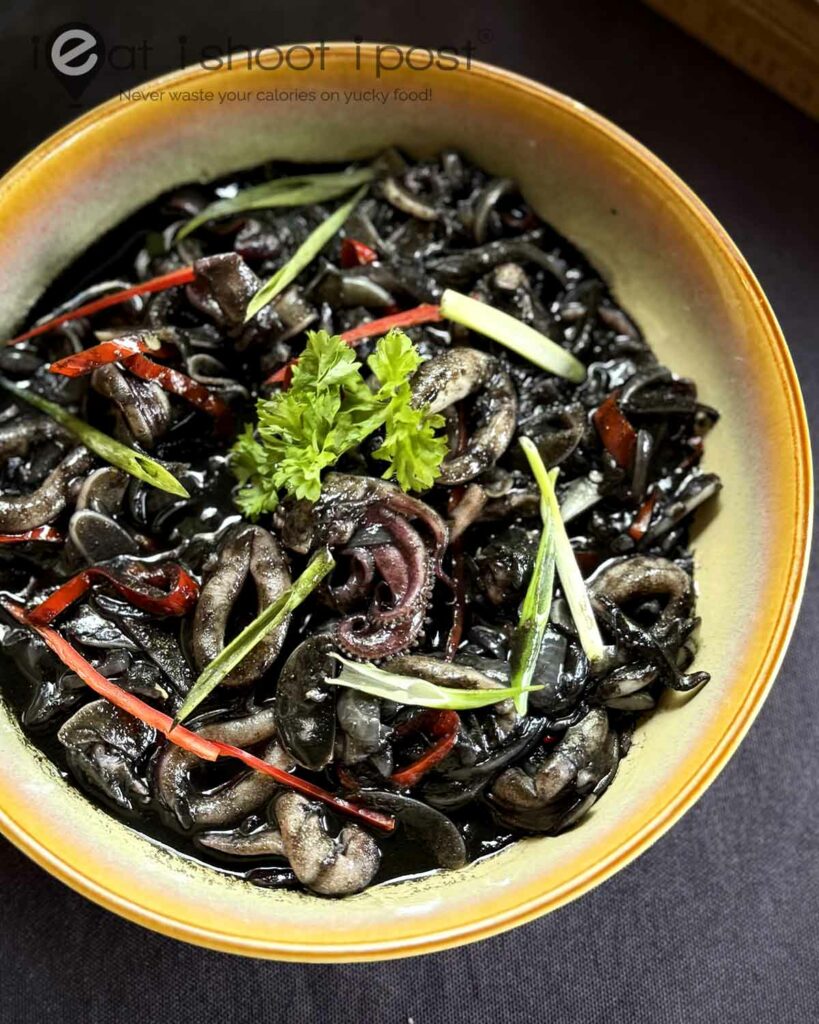
Eurasian Retu Tinta Choka is a unique squid dish that stands apart from its Malay and Italian counterparts. Made with squid stewed in its own ink, Quentin’s version is made with only chilli, garlic and onions in order to highlight the natural flavours of the squid, unlike the Malay version, which tends to be sweeter and spiced with lemongrass or chili, or the Italian seppia al nero, which is usually rich and mellow with olive oil and wine.
Red Leg Prawns Bostador $30
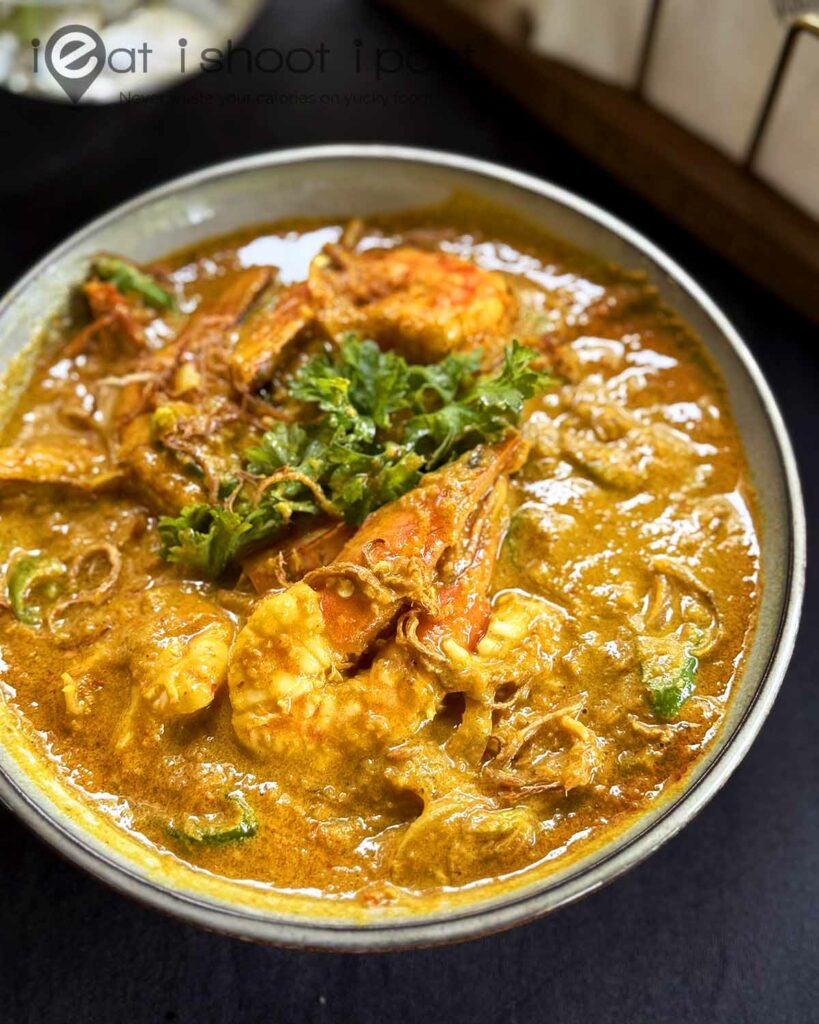
Prawn Bostador is one of the most iconic dishes in Eurasian cuisine, its name derived from the Portuguese word bostador, meaning “to slap” or “to bash”. It’s a dish spiked with green chillies, traditionally meant to deliver a fiery “slap” to wake you up! At Quentin’s, this beloved dish is made with fresh red leg prawns, valued for their sweetness and tender texture. The prawns are bathed in a housemade sambal, enriched with coconut milk. But don’t call 995 just yet, Quentin’s version has been gently mellowed, making it flavourful and comforting without being too intense.
Porku Chilli Garam $23.90
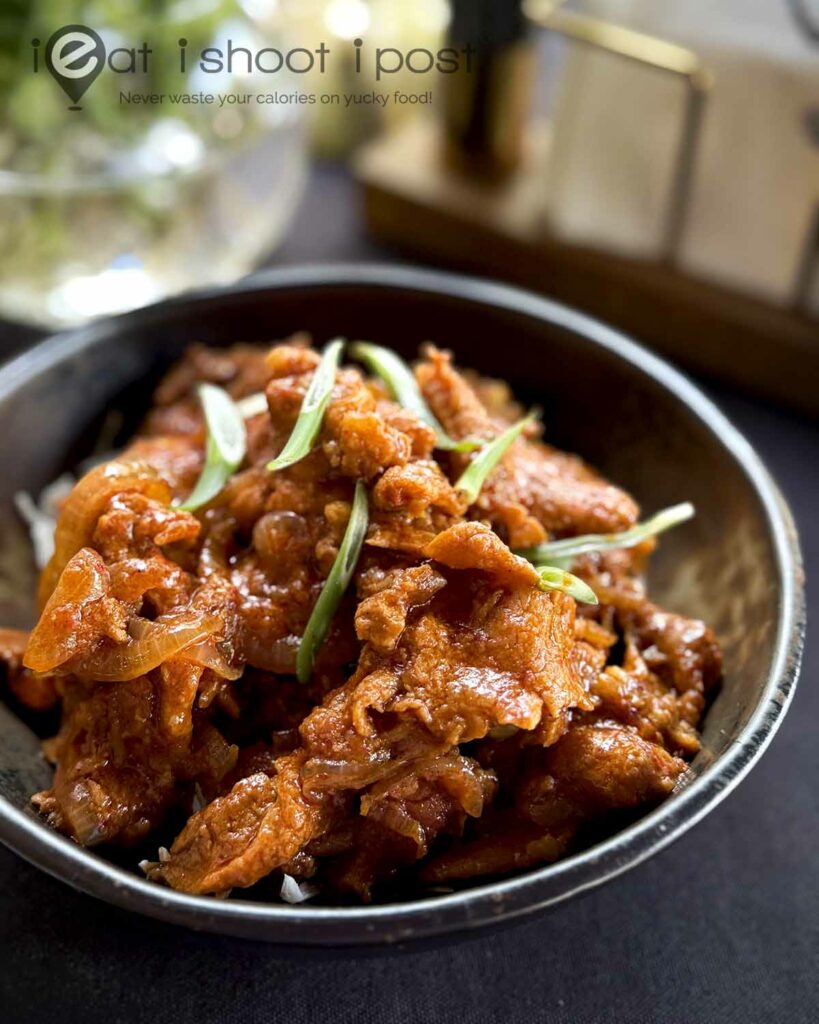
This a fiery Eurasian favourite with deep roots in home-style family cooking. This dish features thinly sliced pork stir-fried with a special housemade rempah—a rich spice paste made from dried chillies, candlenuts, and a splash of lime juice for brightness.
Whole Seabass in Singgang Serani Gravy $35

Singgang Serani is a traditional fish dish from the Kristang (or Serani) community in Malaysia, particularly associated with Malacca (Melaka). The Kristang are people of mixed Portuguese and local (often Malay) descent. “Singgang” itself is a general term for a type of clear, sour, and often spicy fish soup or stew popular in Malay cuisine. Variations of singgang-like dishes are found throughout Southeast Asia. For example, in the Philippines, a similar sour fish stew called “sinigang” uses tamarind or other sour fruits and combines local herbs and vegetables to achieve a comparable balance of sour and savory flavors. So, Singgang Serani is essentially the Eurasian version of this sour fish stew.
Quentin’s version is a whole seabass is deep-fried and then served with a Singgang Serani sauce that has been reduced so that it is more like a gravy than a soup. The sauce is bright and tangy, which goes really well with the fried fish. If they had an option of garoupa, I would have chosen it instead of seabass, as it can taste a little muddy at times.
Patchri (Fried Eggplant) $10.90
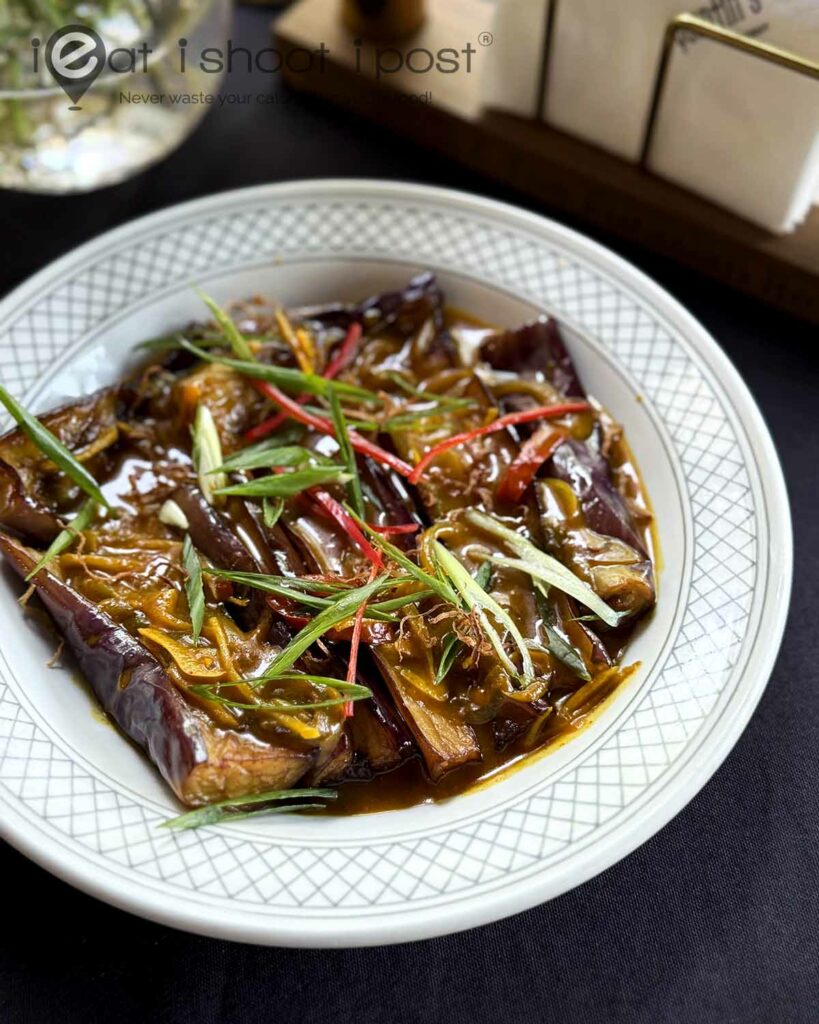
Patchri is a delicious Eurasian-inspired eggplant dish where eggplants are halved, scored, and marinated with pepper and salt before being fried to perfection. The crispy, tender eggplant is then generously topped with a special sweet and spicy sauce, creating a wonderful balance of smoky, savory, sweet, and tangy flavors. If you need a vegetarian dish to accompany your proteins, this would be a great choice!
Putugal (Tapioca cake with banana) $14.50
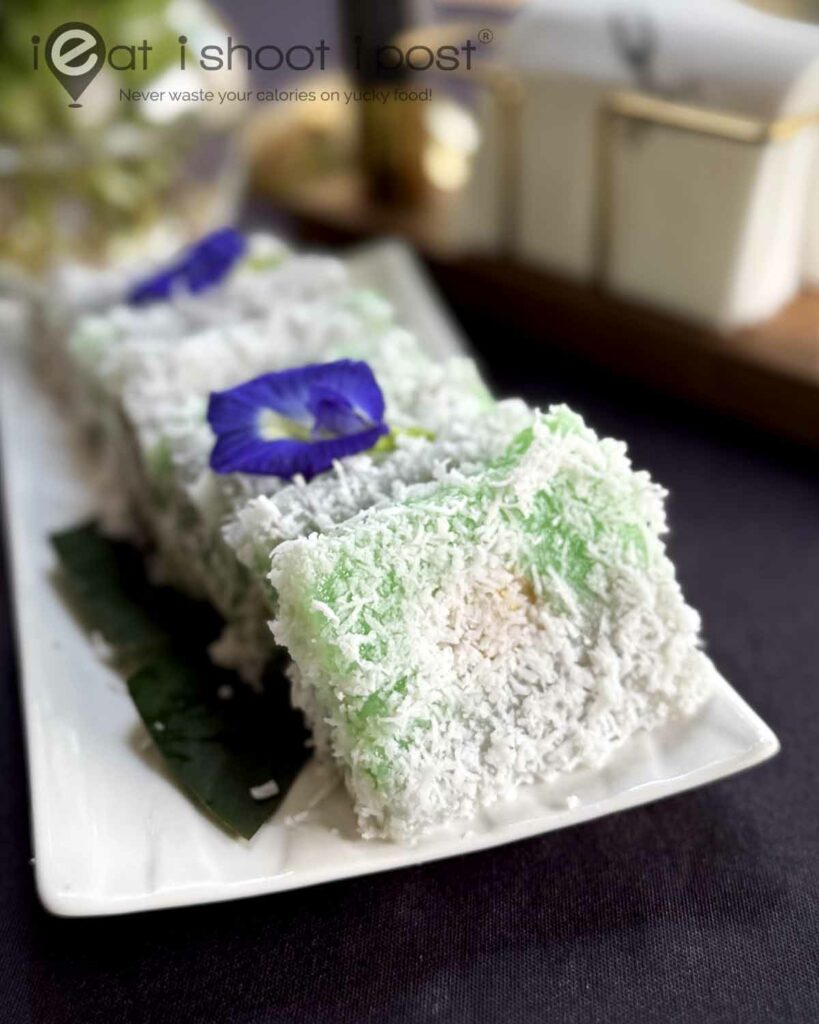
Don’t leave Quentin without ordering their Putugal! This traditional Eurasian steamed kueh made from tapioca, shredded coconut, and pisang Rajah. The beautiful colors come from butterfly pea flower and pandan leaves, which not only give the cake its stunning hues but also add a subtle, fragrant aroma. Combined with the fragrant pisang Rajah—aptly called the king of bananas for its distinctive rich flavor—this kueh is a true delight. It’s no surprise that all our kakis have given it their thumbs up!
Conclusion
It’s no exaggeration to call Quentin’s an institution. As the last truly Eurasian restaurant in Singapore, it has been faithfully preserving an almost extinct cuisine. If you haven’t had the chance to visit, make it a point to go before they close for good this November. I am still hoping there’s still a way for them to renew their lease and continue sharing this unique culinary heritage for a few more years.



